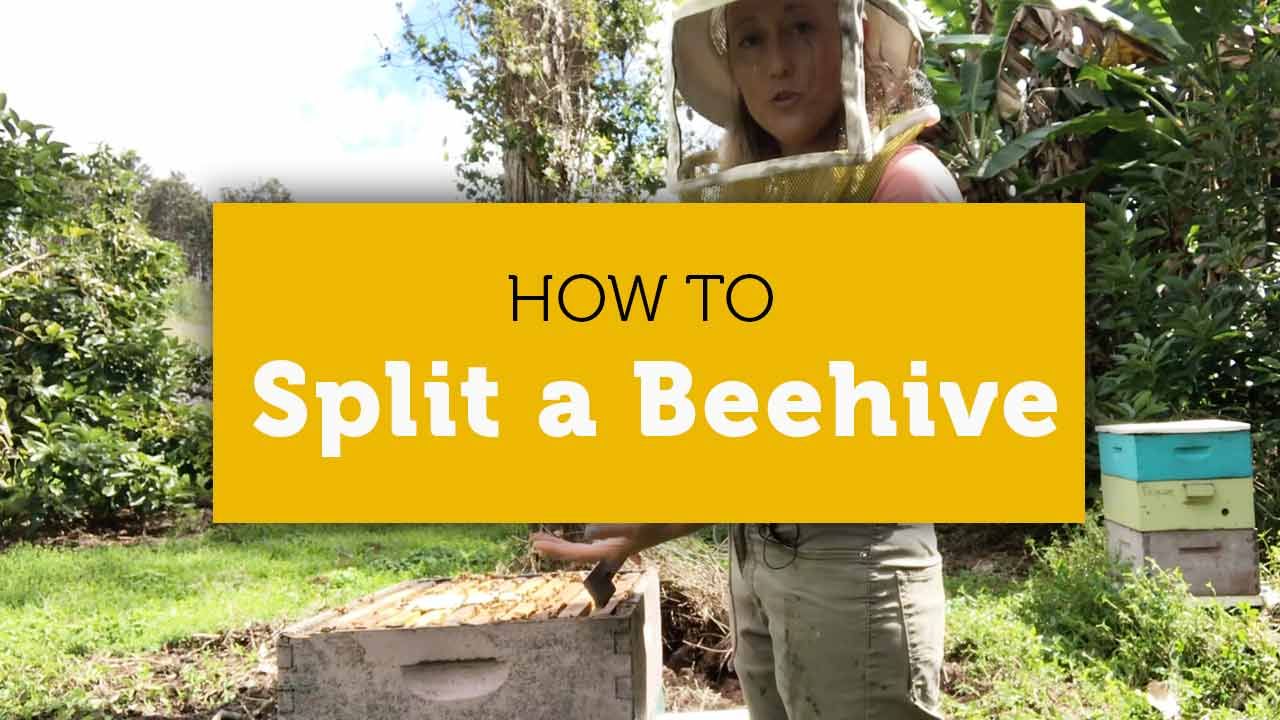
How to Split a Beehive Step-by-step Process (Simplified for the Hobby Beekeeper)
Aug 24, 2023Splitting a beehive is when the beekeeper takes some brood (the baby bees) and honey from a beehive and puts them into an empty beehive in order to increase the amount of hives that they have. There are a few ways to split a hive, but in this video I'm going to show you the way I recommend splitting a hive so that it grows quickly and has the greatest chance of survival.
You don't have to take brood and honey just from one beehive and put into your new hive. You can take a little bit from multiple hives. You can't put a queen from one hive into your split and then take bees from other hives and expect them to all get along. They might... or they might not, and the result will be a hive with no queen.
Watch How to Split a Beehive
If you'd like to skip ahead, here are the video chapters and time stamps for when they begin:
- How to split a beehive so that they can make their own queen - 3:48
- How to split a beehive and introduce a bought queen - 18:27
- When to split a beehive - 29:18
- When not to split a beehive/when it’s too late to split a hive - 29:18
- Common questions about splitting a beehive - 26:34
- How to install a caged queen (purchased queen) to a split - 21:26
- Why split a beehive - 26:34
When to Split a Beehive
There's quite a bit of wiggle room when it comes to when you can split your beehive. You can split your hive as early as you want to as long as you have at least 4 frames of brood to put into it and there's drone cells in your hives, or you have the ability to purchase a queen within the week.
You do not want to split your hive once it is the nectar season is winding down. This is when the activity at the entrance of the hive has decreased, the amount of honey coming in has decreased and the population is going down. For most of the U.S., this is early August. An easy way to see whether this is happening is to keep notes when inspecting your hive and write down how many frames of honey and brood you see. As the weeks go by and Spring turns to Summer, you'll see the number of frames of brood and honey increase. Then there will be a time when the number of frames of brood and honey just stays where it is or might start to decrease. Once this happens, it's too late to split.
Sign Up For a FREE Trial of Our Online Beekeeping Class!
The best time to split your hive is when it's bursting with bees and the first two boxes of your beehive (the brood boxes) are full. There will be 12+ frames of brood total. Splitting your hive at this time will give the brood nest some space, which will, in turn, prevent them from swarming.
Your Two Primary Options When Splitting a Beehive
When you split your hive, your two primary options are to:
1) Put the current queen into the new beehive (the split) and let your current hive produce their own queen or buy a queen to put into the hive. This is the preferred way to go because the split will be small and will grow faster if they already have a healthy, laying queen doing her job. The queenless hive is considerably larger and can handle not having a queen laying eggs for a few weeks.
2) Keep the queen in the beehive and put frames of capped brood and older larvae into the new beehive. Wait about 4 days and then put a caged queen into the split as well as do a thorough check to make sure there are no queen cells in the hive.
Bees will not accept a queen if there are queen cells in the hive!
Splitting a Beehive In Warm Climates
If you live in a warm climate where there is food for the bees to gather year round, then there are two times you should split your beehive - during the nectar season to prevent swarming and in the cooler months when there isn't as much honey coming in to increase the amount of hives in your apiary.
When I worked for a commercial apiary in Hawaii, with thousands of hives, they split their bees in November, when there wasn't much blooming. The reason for this was because they wanted to harvest as much honey as possible and when you split a hive, you're hitting the brakes of a hive's honey production. After all, you are taking the queen and a lot of bees from them.
More Beekeeping 101 Articles
- How to Buy Bees
- How to Spot Eggs in a Beehive
- The Parts of a Langstroth Hive
- Beekeeping Tasks Through the Seasons
Want to learn more about beekeeping?
Join our newsletter for blog updates, beekeeping videos, sales and contests.




